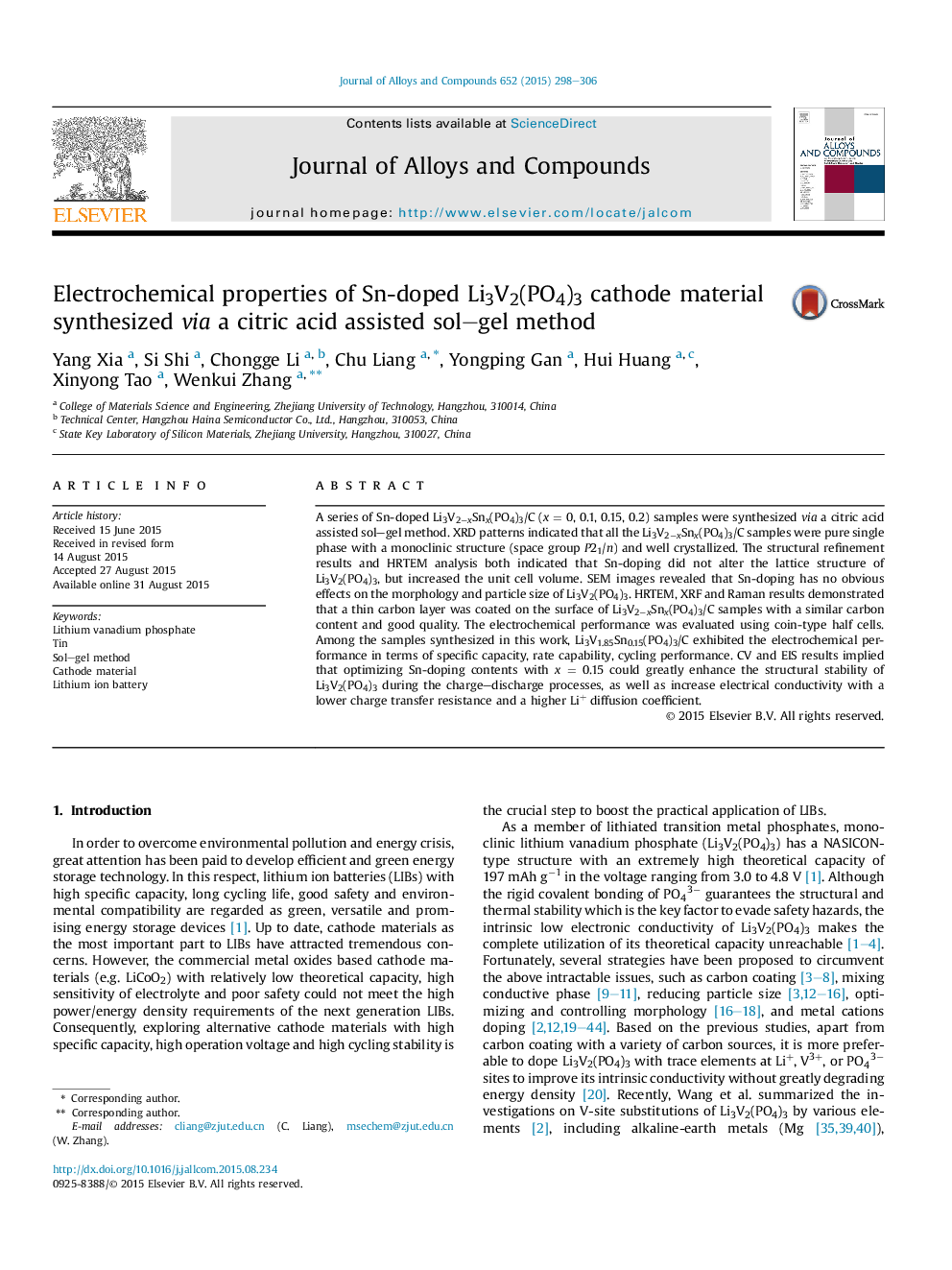| Article ID | Journal | Published Year | Pages | File Type |
|---|---|---|---|---|
| 1607774 | Journal of Alloys and Compounds | 2015 | 9 Pages |
•Li3V2−xSnx(PO4)3/C composites were synthesized via a sol–gel method.•Sn-doping expanded the unit cell volume, but did not alter the lattice structure.•Electronic and ionic conductivity can be enhanced by doping Sn.•Li3V1.85Sn0.15(PO4)3/C exhibited enhanced cycling stability and rate performance.
A series of Sn-doped Li3V2−xSnx(PO4)3/C (x = 0, 0.1, 0.15, 0.2) samples were synthesized via a citric acid assisted sol–gel method. XRD patterns indicated that all the Li3V2−xSnx(PO4)3/C samples were pure single phase with a monoclinic structure (space group P21/n) and well crystallized. The structural refinement results and HRTEM analysis both indicated that Sn-doping did not alter the lattice structure of Li3V2(PO4)3, but increased the unit cell volume. SEM images revealed that Sn-doping has no obvious effects on the morphology and particle size of Li3V2(PO4)3. HRTEM, XRF and Raman results demonstrated that a thin carbon layer was coated on the surface of Li3V2−xSnx(PO4)3/C samples with a similar carbon content and good quality. The electrochemical performance was evaluated using coin-type half cells. Among the samples synthesized in this work, Li3V1.85Sn0.15(PO4)3/C exhibited the electrochemical performance in terms of specific capacity, rate capability, cycling performance. CV and EIS results implied that optimizing Sn-doping contents with x = 0.15 could greatly enhance the structural stability of Li3V2(PO4)3 during the charge–discharge processes, as well as increase electrical conductivity with a lower charge transfer resistance and a higher Li+ diffusion coefficient.
Graphical abstractFigure optionsDownload full-size imageDownload as PowerPoint slide
